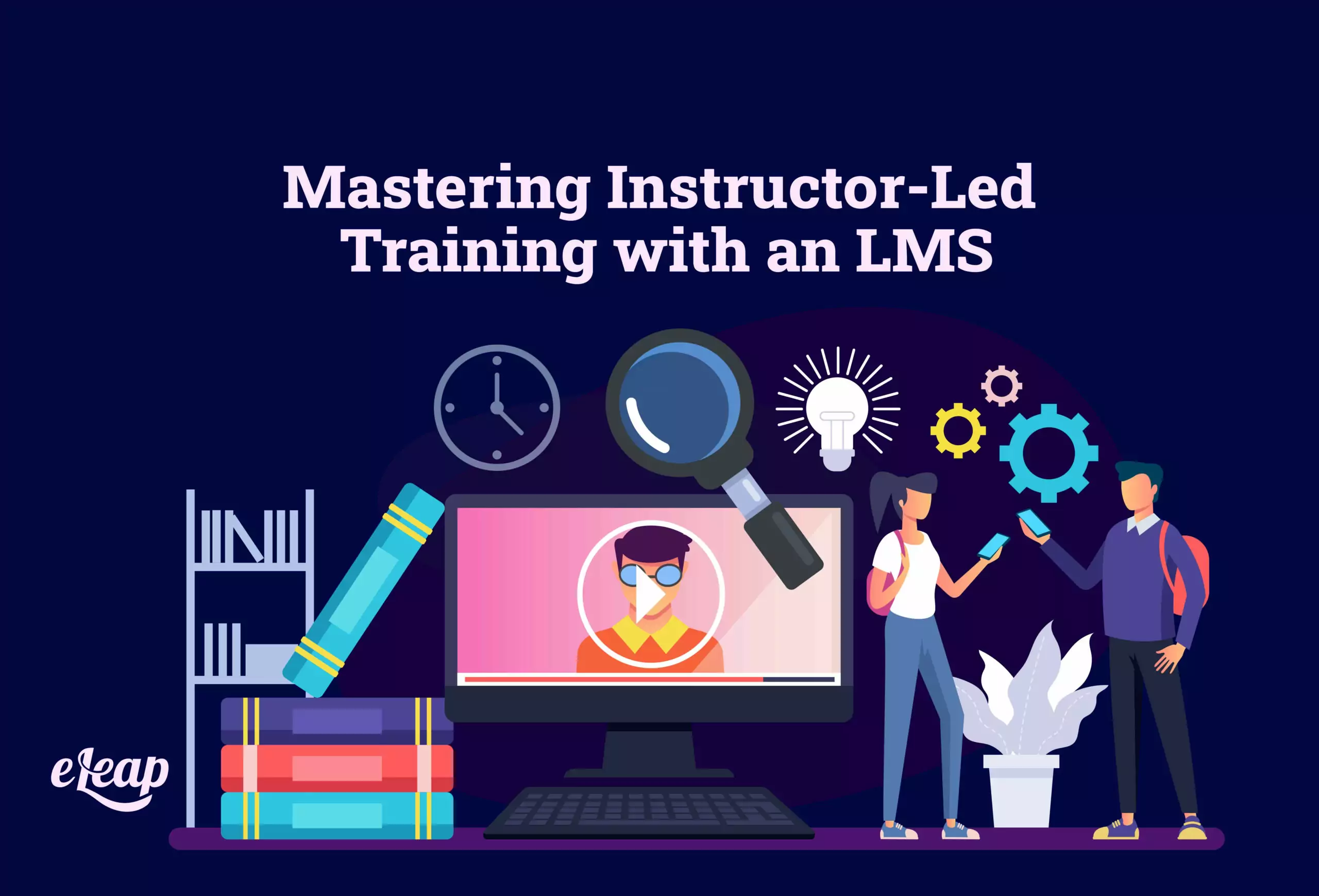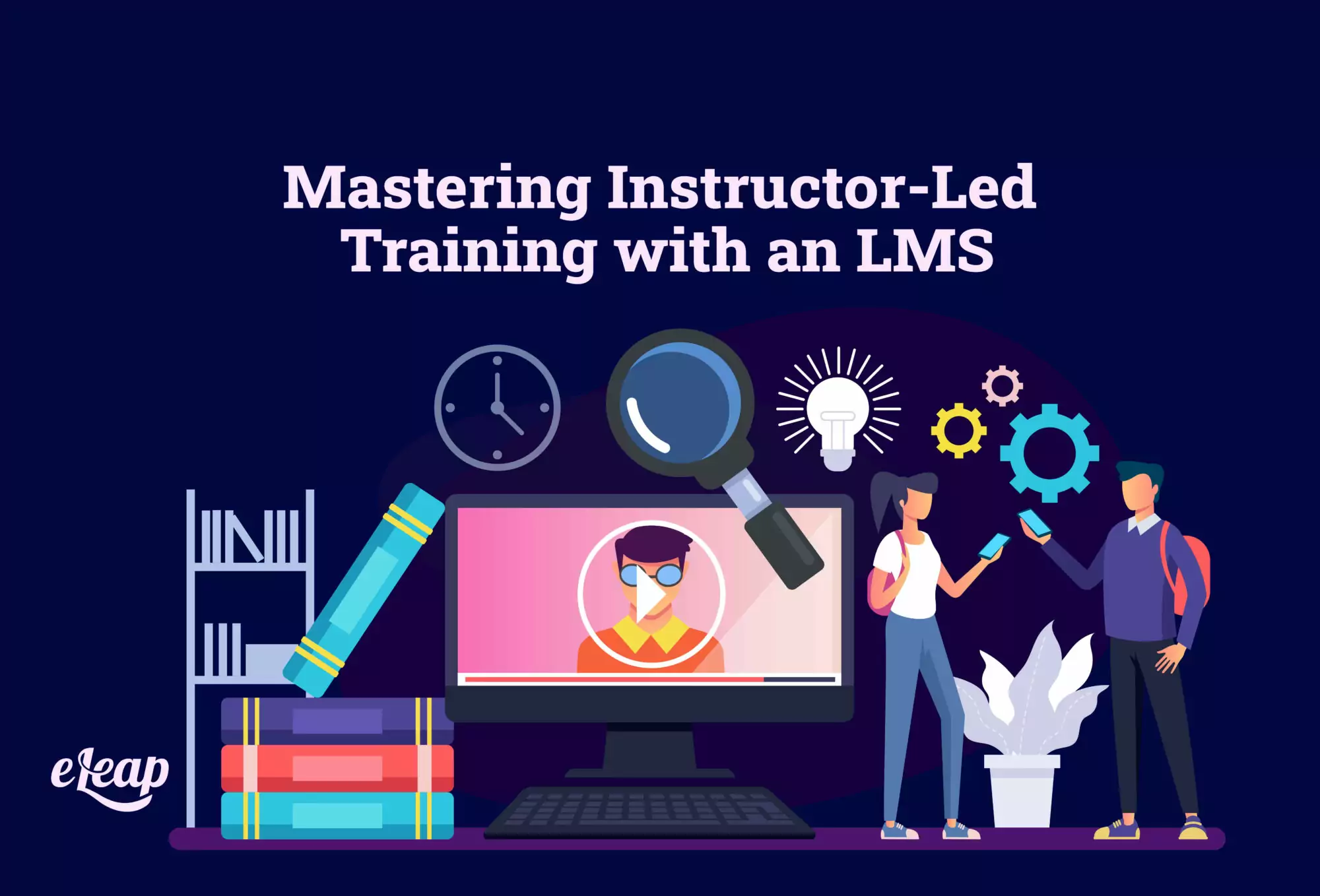Mastering Instructor-Led Training with an LMS

Many people believe that learning management systems consist of eLearning alone, with lessons solely based on online platforms. However, this couldn’t be further from the truth.
Instructor-led training is a real possibility with current LMS platforms. This actually provides a much higher level of convenience because of the ability for remote learning in a virtual setting at everyone’s convenience.
You’re probably wondering how an LMS can be flexible enough to provide instructor-led training. The instructor must possess expertise in specific places to make this possible, and thorough research must be done regarding course material.
If you’ve been wondering about third-party or instructor-led training, you’re in the right place. In this article, we’ll examine how to master instructor-led training with an LMS platform.

Developing the Right Model
When you begin crafting your LMS based on instructor-led training, the proper structure must be put in place. There are several models available that fit this form of training specifically, and you must carefully select the right model in order for the training to be effective.
In certain structures, there may be only one session altogether. However, others may include several sessions. Based on the number of sessions, you can decide how many instances employees have during training.
When there is one session with one instance structure, employees will only attend the class together one time. However, when there is one session with multiple instances, you can schedule different team members at different time slots to hear the same lecture from your instructor.
The ability to divide classes into smaller fragments of students may make certain instructors more comfortable when delivering course material. This will often lead to more clarity for the students that are present for said lectures.
There are certain models that will consist of one instance during each session, consisting of the same group of employees attending different instructional classes. This is probably the most efficient when you are dealing with a small group of team members.
Another specific form is multiple sessions, with one instance available for each specific session. Each student will have sessions associated with two or more instances.
The structure and model of training play a pivotal role in crafting your training strategy. This is why it’s important to research before choosing the model, as stated earlier in the article.
The Right Location
Specifying the location of the training is incredibly important during the decision-making process as well. Your LMS can have a training location that’s made up of a conference room, an offsite hotel, or any other location that appropriately makes up a classroom environment.
Many times instructor-led training is set up through third-party consultants. The training office can be set up anywhere based on what’s most convenient for all parties involved.
Freedom of Schedule Selection
Most LMS platforms provide the benefit of being able to choose a learning schedule based on what’s convenient for the employee. When you provide the list of options to your team members, they can choose a suitable date and time slot based on the availability they have.
Once you choose your options, the updated list is sent to employees with all of the essential information. This includes times, dates, and all other relevant information regarding the instructor-led classes.
This also gives employees the ability to self-register, which makes the process nearly automated. There should be a smooth registration and scheduling flow without much hassle or interruption.
Picking the Right Trainer
One of the main benefits of this type of learning through LMS is the fact that employees can select the specific instructor they want. When there are multiple sessions and instances, employees may choose different instructors if they don’t want the same one for each instance.
Assigning Training Schedules
Once the sessions are assigned to each employee, they will automatically receive notification of each assignment. Afterward, they can search their schedules and pick based on assigned classroom slots.
When they pick the corresponding spot within the LMS, they will receive updated information such as date, time, training venue, and the name of the instructor. Any changes or additions are also available on the platform.
Examining Performance
When an LMS is used for any purpose, examining the performance of employees is one of the main highlights. This allows you to see who completed each training session and how they scored.
Giving them credit for a job well done or commending them for hard work is a great way to keep them motivated. Certificates of achievement can be given to employees that complete certain training classes based on a minimum score or completion in general.
Generating Reports
These performance reports are stored permanently on the LMS platform or in the cloud, depending on how courses are set up. This gives administrators lifetime access to these reports, which has several benefits.
Storing and retrieving these reports allows you to go over them with employees at any given time to further research progress and other information. This has significant benefits when specific areas may need improvement during or after courses are completed.
These reports may also be used to craft benchmarks or expectations for future team members and new hires. Over time, this will also alert you to any changes that may need to be made to the learning material if there are certain areas employees are having difficulty digesting.
Utilizing an LMS platform with instructor-led training can provide many benefits for your organization. Despite the effectiveness of automated aspects of an LMS, nothing can replace the efficiency and connection of human interaction.
This allows employees to engage with instructors and receive additional attention on areas where it’s necessary. Depending on your company specifically and your team members’ most effective method of learning, instructor-led training could prove to be more effective overall.
Regardless of the specific method you choose, clearly, the most important element is capturing and storing relevant data for reports. This reporting will allow you to further craft and optimize your LMS platform in the future, leading to more efficient learning and training for new employees.